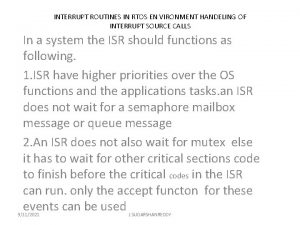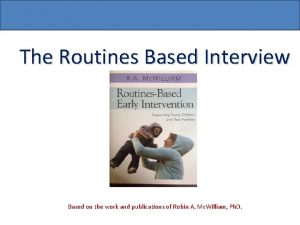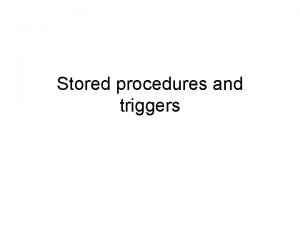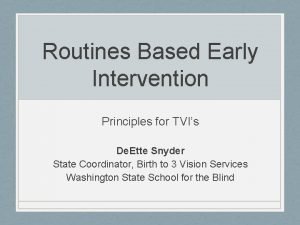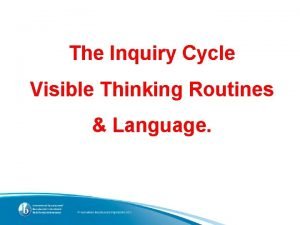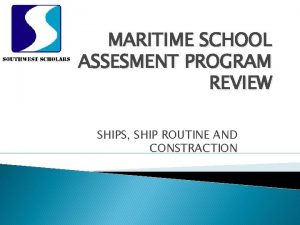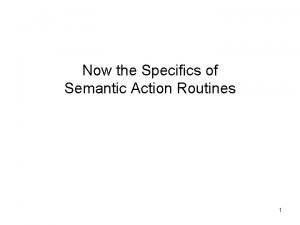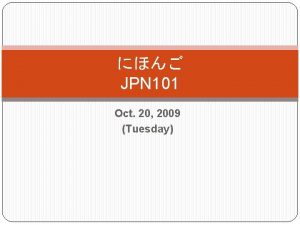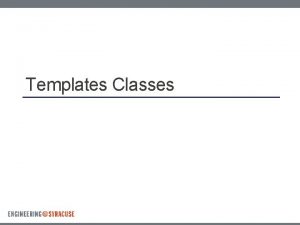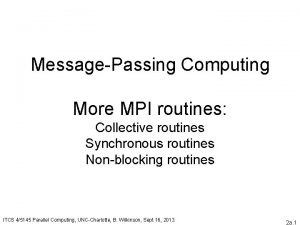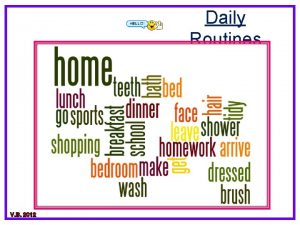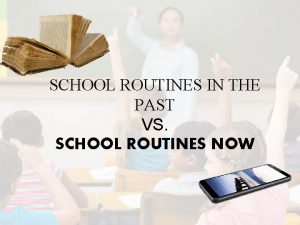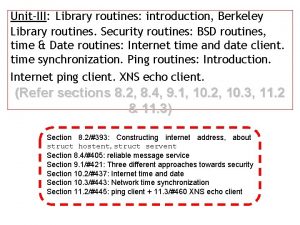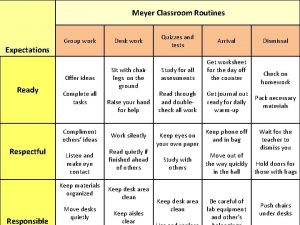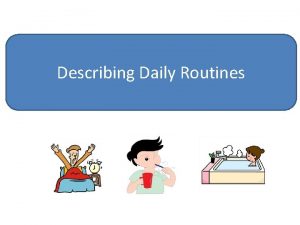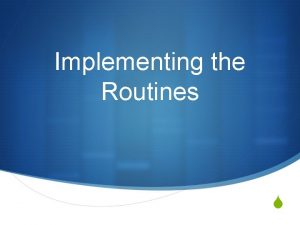Teaching Expectations Teaching expectations In classes where routines













- Slides: 13

Teaching Expectations

Teaching expectations • In classes where routines are established on the first day of school, students are more engaged in academic activities and make more academic progress throughout the year (Bohn et al. , 2004; Evertson, 1989). • Rules alone are not enough, though! – Need to be implemented as part of a comprehensive instructional and behavioral systems – Need to be consistent with school’s culture – Need to be taught explicitly – Need to be reviewed regularly Rathvon, 2008

Our expectations = set of social skills • Social skills are. . . – Behaviors that individuals display within a certain situation that predict and are associated with important social outcomes – What does that mean? • Behavior = something observable and measurable • Situation = context and/or antecedent • Outcome = acceptance; positive descriptions Darch & Kame'enui, 2004, p. 154

Why teach behavioral expectations? • Why do we need to teach behavioral expectations? • What kinds of classroom situations demand a certain level of social skillfulness? – – – – Having a conversation Working in groups Problem-solving Making friends Following rules Self-management (e. g. , during independent work) Others? Darch & Kame'enui, 2004

Phases of learning Acquisition Fluency Maintenance Generalization

Teaching behavioral expectations: Phases of learning • Ensure that your instruction matches students’ phase of learning. • Remember: Generalization is the goal of all teaching. • How can we increase the likelihood of generalization? Simonsen & Myers, 2015

Teaching behavioral expectations: Other considerations • Provide the same level of constructive feedback for social behavior that you do for academic behavior. – Reteach, test, and provide feedback. – Give the same level of encouragement. • Minor behavior errors should be corrected like academic errors. • Why is this so difficult sometimes?

Teaching behavioral expectations: Prompting • Teachers need to use prompts and precorrects to enhance behavioral expectation instruction. – A prompt is a stimulus added to the environment to increase the likelihood of the antecedent stimulus occasioning the desired behavior. – A precorrect is a prompt given to students before a situation in which there is a high likelihood of problem behavior.

Teaching behavioral expectations: Prompting • There are four types of prompts: – Visual – Verbal – Gestural – Physical • How can these be used to increase the likelihood that students will display the social skills they’ve been taught?

Teaching expectations: Prompting • What might prompting look like? https: //drive. google. com/file/d/0 BN 7 fj. ZRj. VZNVno 0 VGE 5 UGJ 4 RFE/view? usp=sharing • The videos we will be using to illustrate some of the content were generously provided by Dr. Terry Scott from the University of Louisville in Kentucky, a PBIS pioneer who is completely committed to effective behavioral support for all students and teachers. – https: //louisville. edu/education/abri

Thinking about data collection • What are some student and teacher behaviors that would be relevant in establishing and teaching expectations? – Students’ knowledge of expectations – Any expectations taught to students – Teacher use of prompts and precorrects – Others? • You could use one of your Data Collection Plan templates to focus on one of these behaviors.

Behavioral expectation lesson plan • The lesson plan template in your handout will help you create a behavioral expectation lesson plan that incorporates all the key features, including: – Your teaching objective – Positive and negative teaching examples – Materials you will need for your lesson – “Model, lead, and test” activities – Follow-up activities

Behavioral Expectation Lesson Plan Activity • In your activity handout, locate the Behavioral Expectation Lesson Plan Activity template. • Sketch a quick outline of a lesson plan based on one of the “boxes” from your matrix. • You will have 15 minutes to complete this activity.
 Innovative routines international
Innovative routines international Interrupt routines in rtos
Interrupt routines in rtos Interview method in psychology
Interview method in psychology Triggers and routines in sql
Triggers and routines in sql Family guided routines based intervention
Family guided routines based intervention Pyp visible thinking routines
Pyp visible thinking routines Daily routines simple present tense
Daily routines simple present tense Ship ship routines and construction
Ship ship routines and construction Semantic routines
Semantic routines Daily routines and adverbs of frequency
Daily routines and adverbs of frequency Classe e subclasse dos nomes exercícios
Classe e subclasse dos nomes exercícios Pre ap classes vs regular classes
Pre ap classes vs regular classes Teaching multilevel esl classes
Teaching multilevel esl classes Macro teaching is a scaled down teaching
Macro teaching is a scaled down teaching

